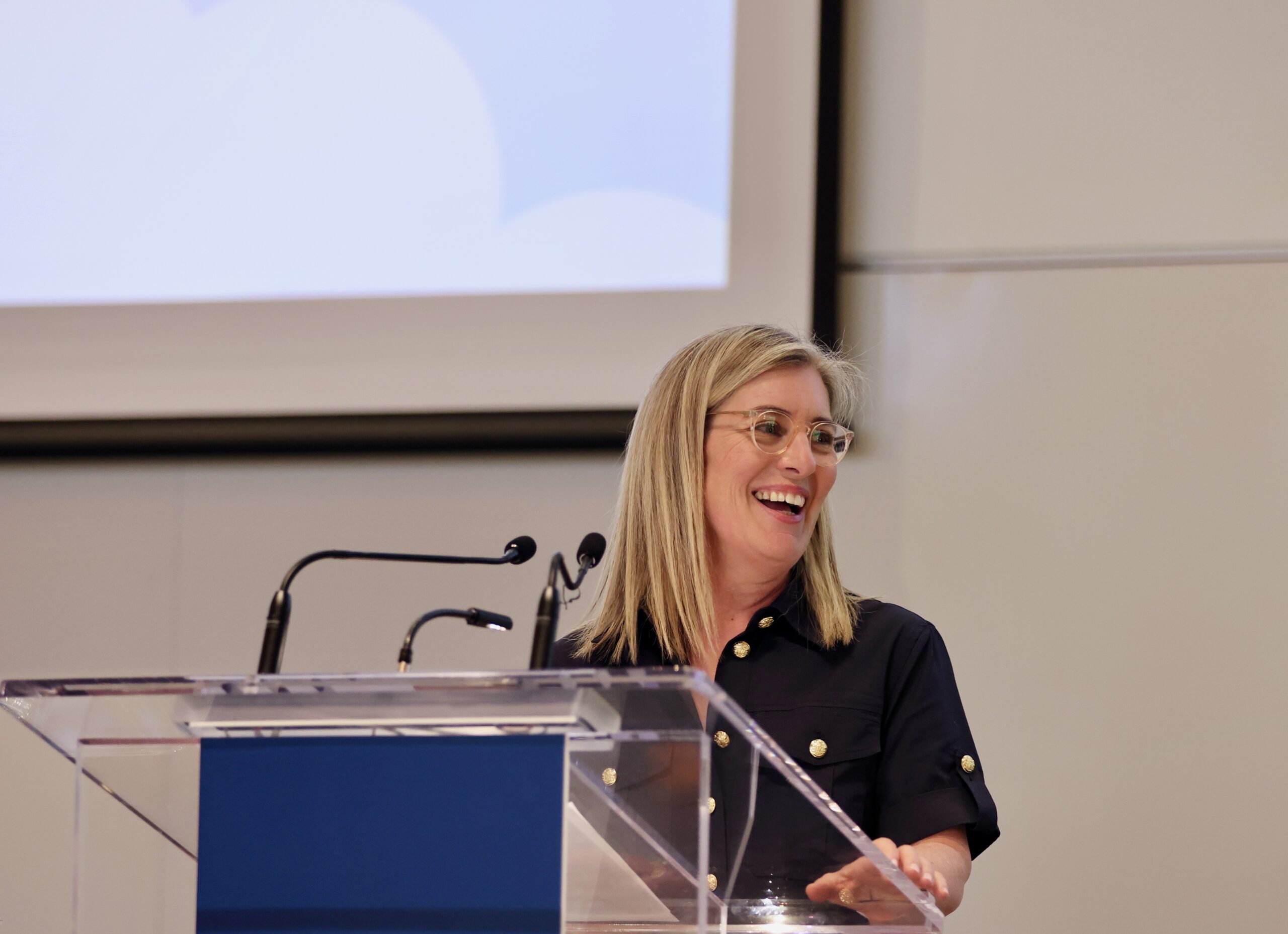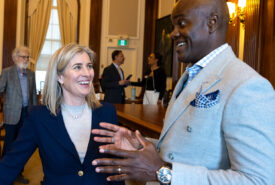‘We must rise to meet this moment’: Melanie Woodin officially installed as U of T’s 17th president

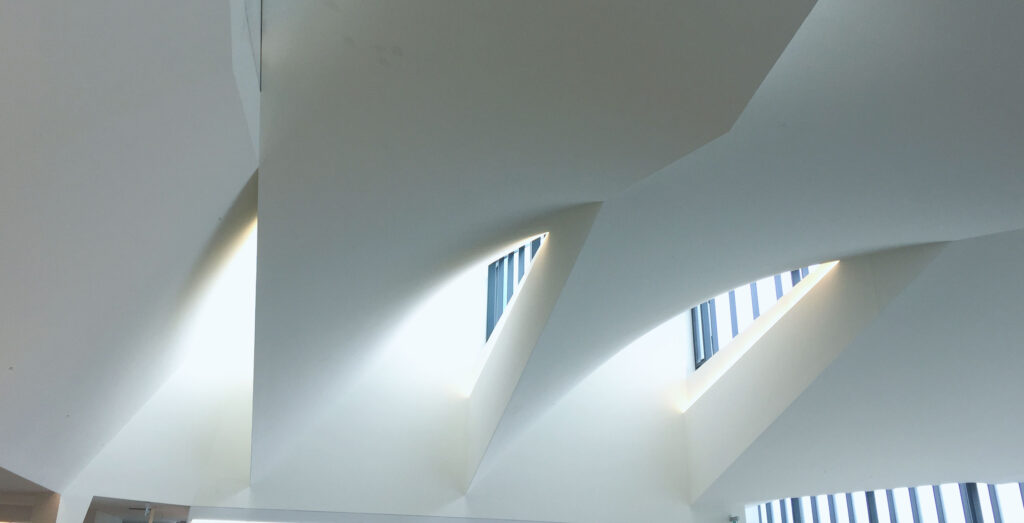
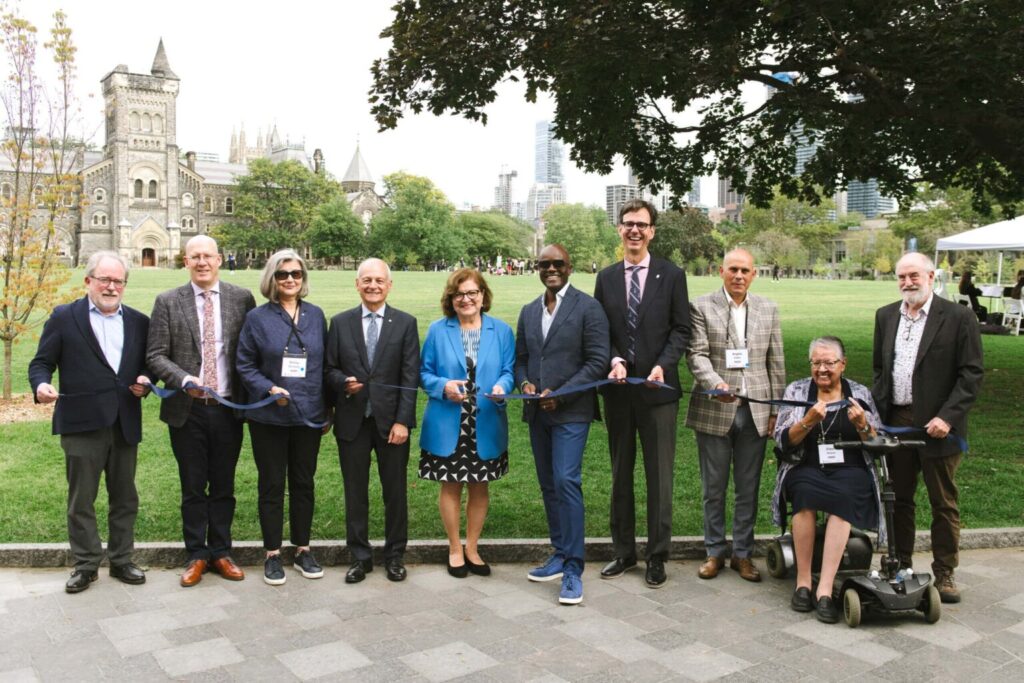
University of Toronto President Meric Gertler participates in the Landmark Project’s official opening event in September 2024.
Thanks to the support of more than 4,500 donors, the University of Toronto’s downtown campus is a greener and more accessible environment.
In the heart of downtown Toronto, a monumental transformation has taken shape at the University of Toronto’s St. George campus. Long known for its historic architecture and nearly 200 years of academic tradition, the university has recently completed the Landmark Project, a sweeping revitalization effort supported by thousands of donors. The project’s goal: to create a more sustainable and pedestrian-friendly campus for generations to come.
“The Landmark Project represents more than just a physical transformation — it’s a reimagining of what our campus can be,” said President Meric Gertler. “This is a space designed for people, where students, faculty, alumni and visitors alike can connect, reflect and recharge. The shift from a car-dominated environment to a green oasis reflects our commitment to sustainability and inclusivity. The impact of this project will last generations, and we are grateful to everyone who contributed to its success.”
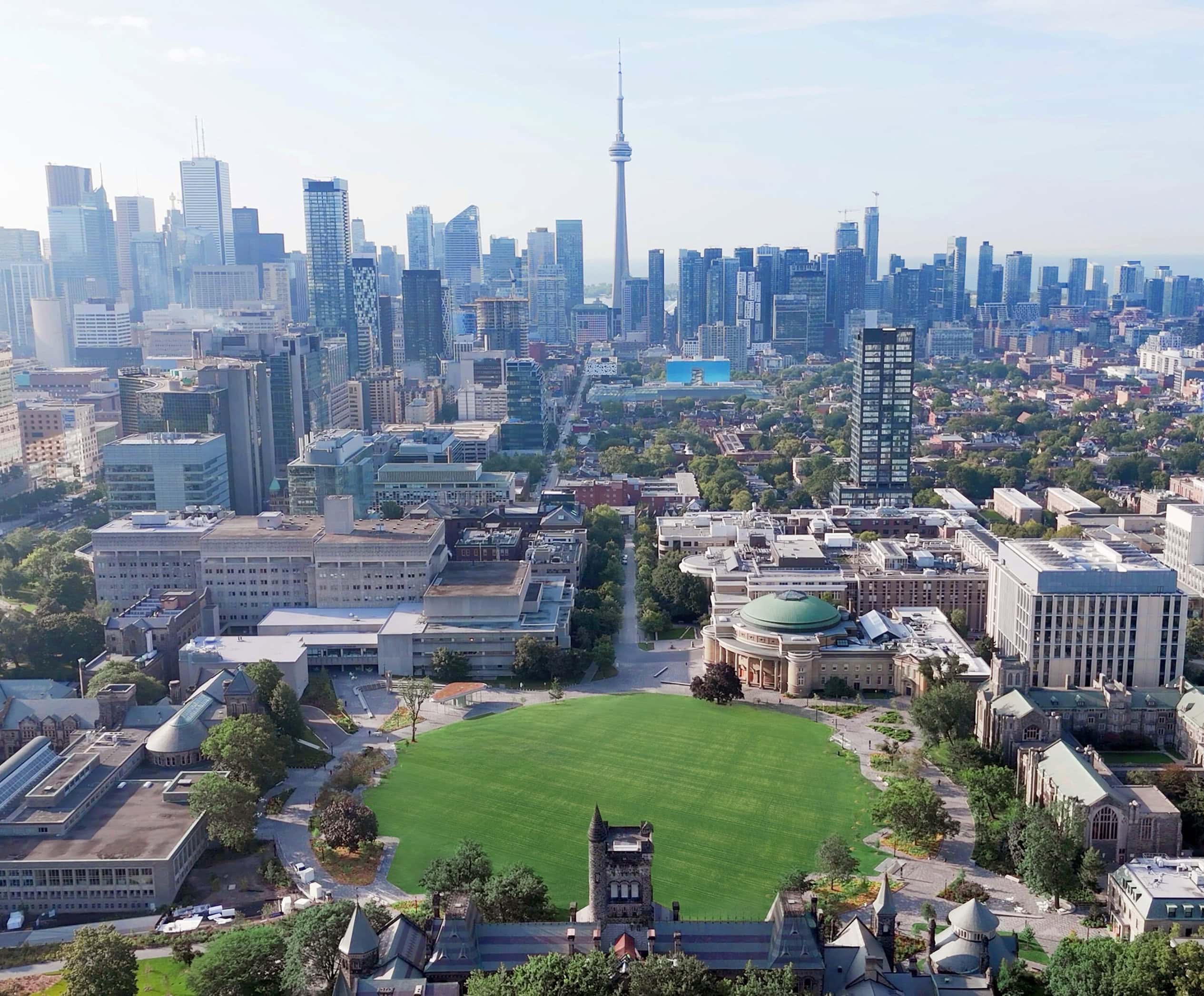
The Landmark Project’s vision extends far beyond mere construction and landscaping—it represents the university’s bold commitment to sustainability, inclusivity and fostering community connections.
From the historic libraries and classrooms surrounding King’s College Circle to the tranquil new gardens, the campus has been reimagined as a space that honors both heritage and human connection.

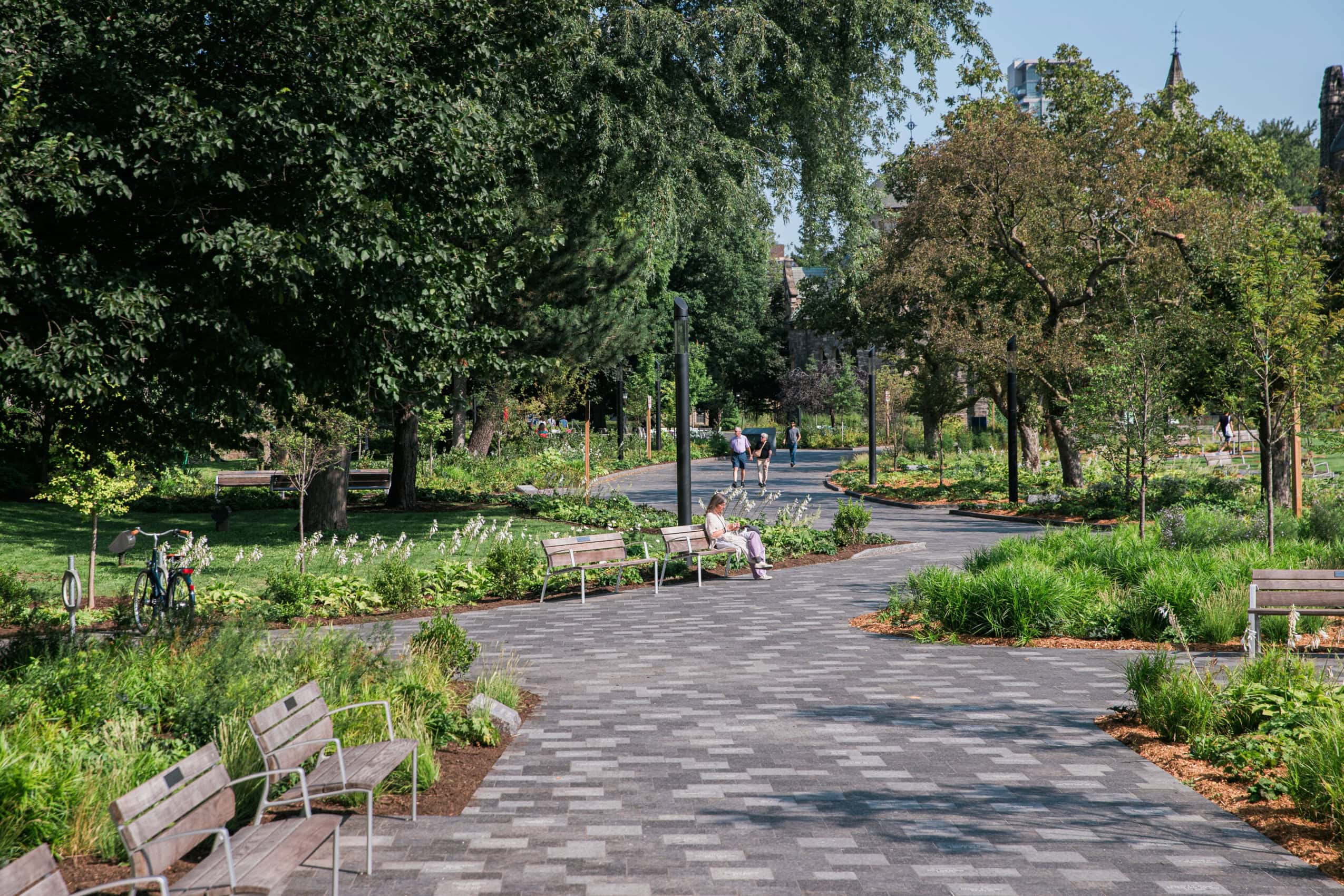

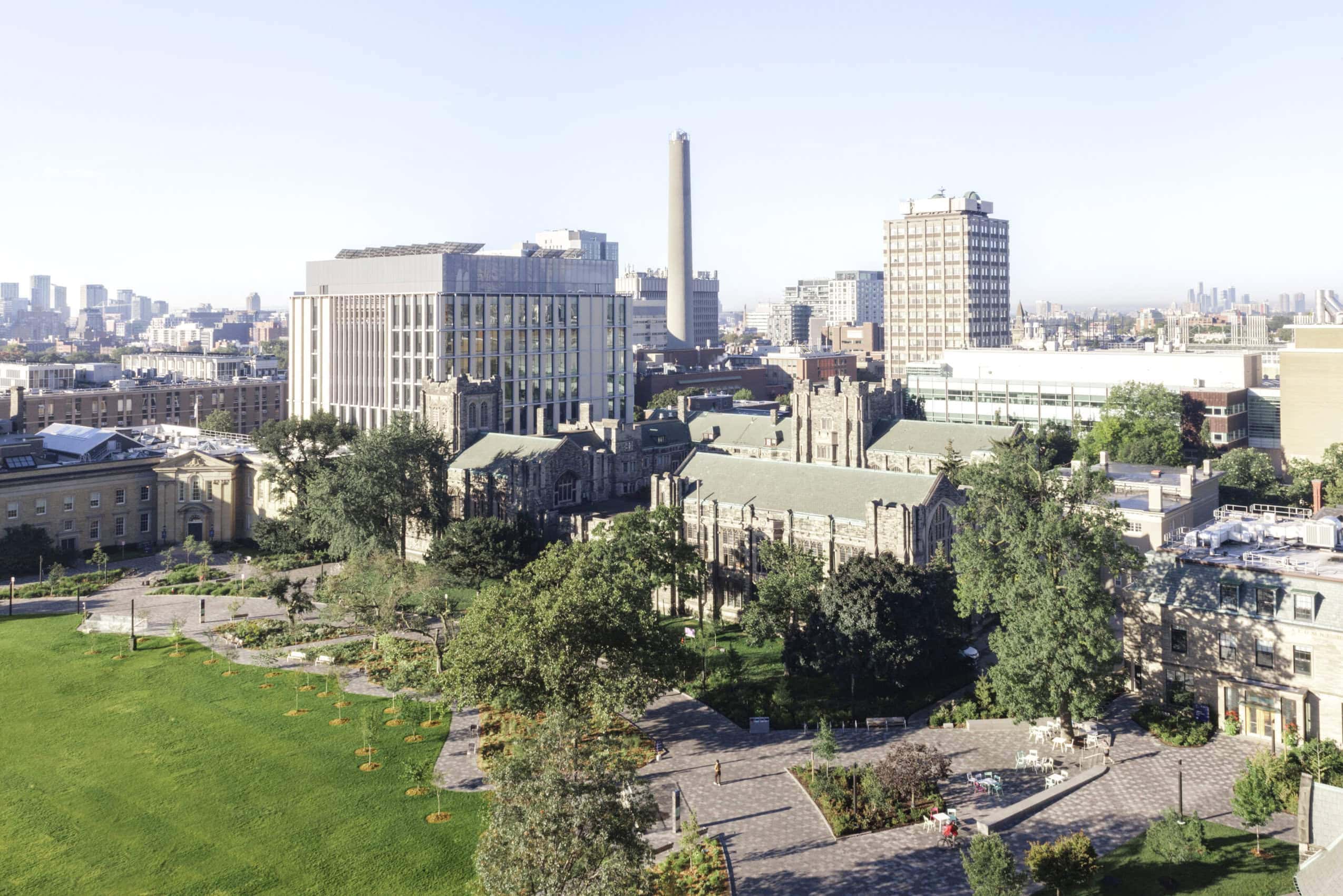
The accessible new garage removes surface parking from King’s College Circle with 236 parking spots, including 48 with electric vehicle charging capability. There is also room for over 100 bicycles. This is all part of making the St. George campus a more pedestrian-friendly space and more accessible to the U of T community.
Landmark also signals a huge advance in U of T’s climate positive goals, with the installation of Canada’s largest urban geoexchange field under King’s College Circle. This system is effectively a giant thermal battery that will help heat and cool surrounding buildings. It is part of U of T’s climate positive plan to achieve net positive energy emissions. In order to achieve this, 372 wells were drilled 250 metres underground — half the height of the CN Tower. These boreholes are distributed beneath the entire area of the new underground parking garage. After years of construction, the geothermal field now stands as a testament to the university’s commitment to environmental stewardship and social responsibility. It will also serve as an in-person learning tool for students in engineering and environmental sciences.

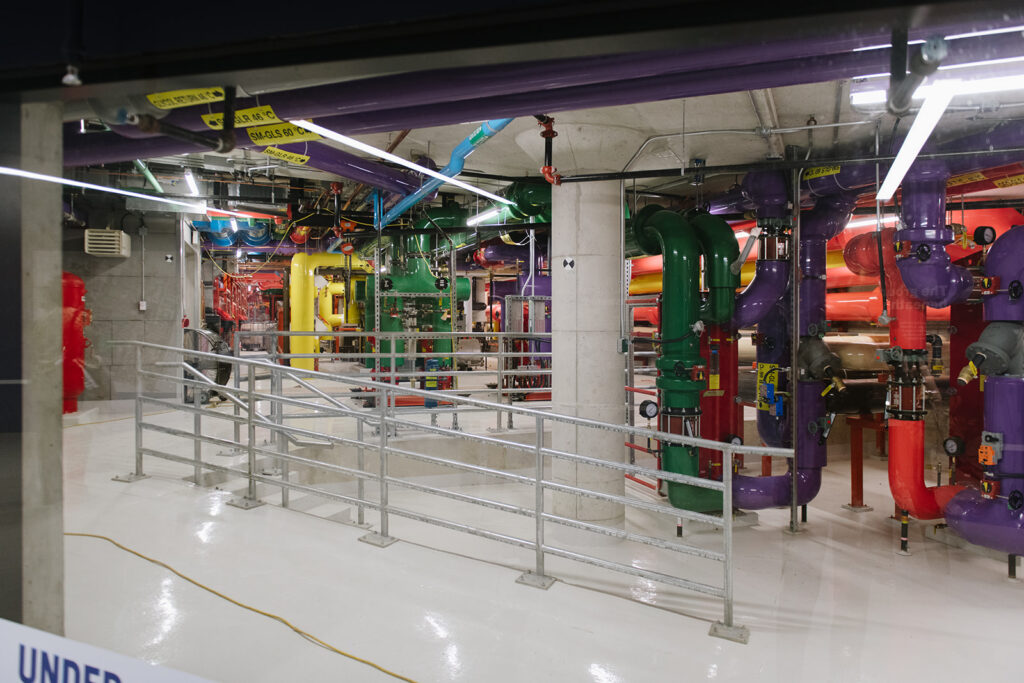
“Many of our donors, advisors and staff members have been involved since day one,” said Scott Mabury Vice-President Operations and Real-Estate Partnerships and co-sponsor of the Landmark Project. “This entire undertaking was driven by a collaborative spirit since its inception. The project team was tremendously resilient in the face of adversity over the past five years but carried the entire project — from the largest to the smallest details — through to completion. We can all be proud of the finished result.”
“During construction, we worked to keep our community safe, all while managing the intricacies of the largest construction site we’ve ever had,” said Mabury. The project owes much to the collaborative efforts of talented architects and designers, including Shirley Blumberg from KMPB and Michael Van Valkenburgh from MVVA, as well as the skilled work of EllisDon, our trusted construction partner. Generous support from donors, especially lead supporters like the UTSU and the UTAA, played a critical role in bringing this vision to life.
The University of Toronto Students’ Union (UTSU) helped create the UTSU Welcome Path, a new, accessible entrance from the southeast corner of front campus, connecting our university to Queen’s Park and the subway station. And the University of Toronto Alumni Association helped fund Alumni Plaza, just outside of Convocation Hall. These early gifts from university students and alumni set the momentum for the tremendous support for Landmark as a whole.
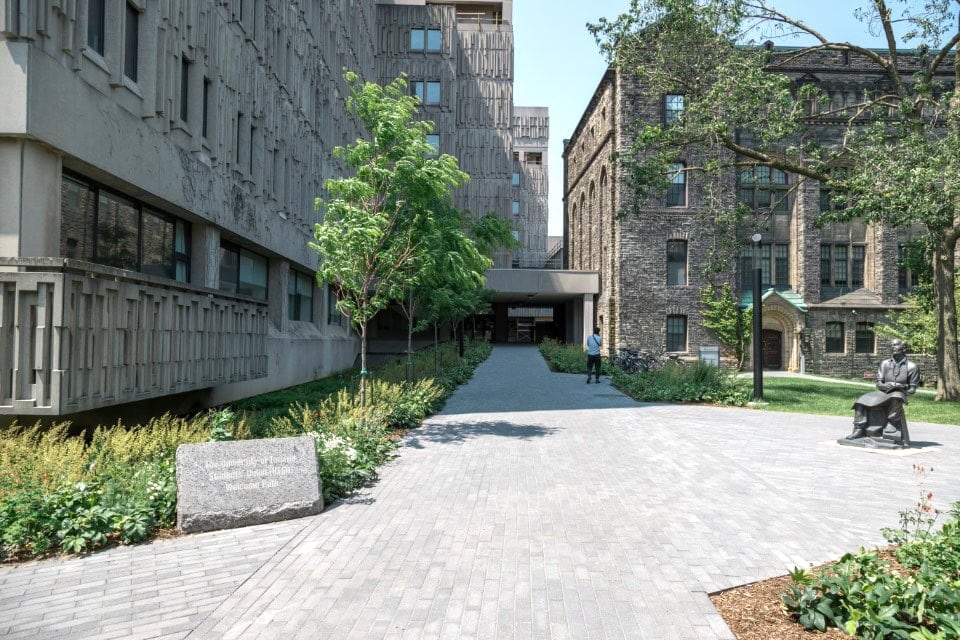
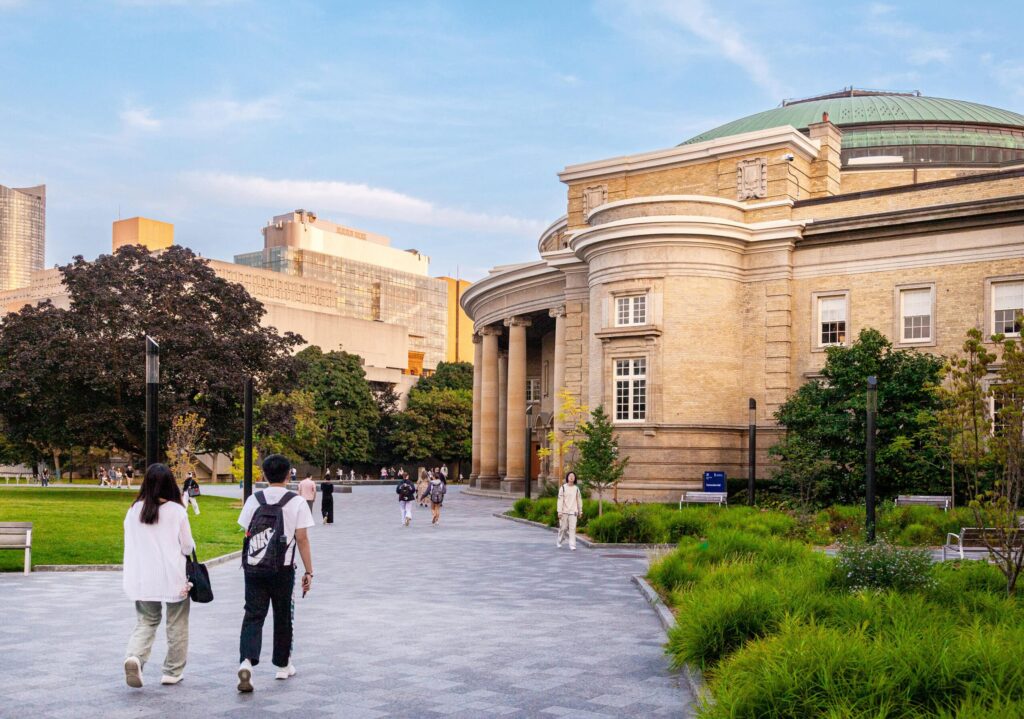
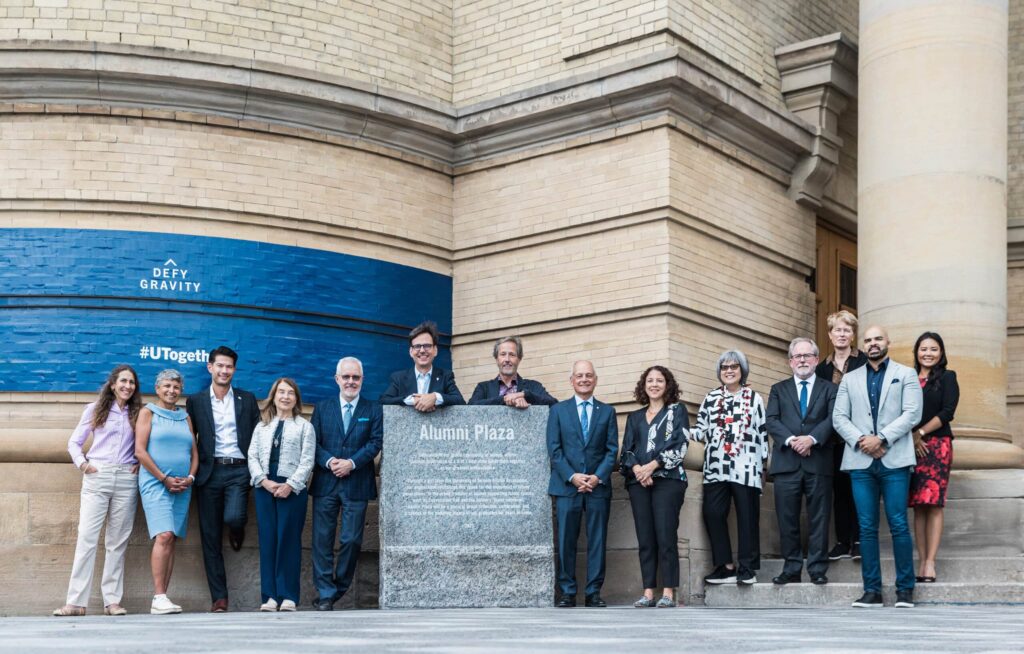
Temerty Plaza, in front of the Medical Sciences building, home to the Temerty Faculty of Medicine, features seating walls, gardens and new glass pavilion providing accessible access to the parking garage. The areas in front of Hart House and the Louis B. Stewart Observatory have been transformed with the addition of granite paving stones, new trees, benches and gardens. To the south is the Grandchildren’s Garden, supported by Chancellor Emeritus David and Shelley Peterson, and the new Houlden-Yen Family Arrivals Plaza.
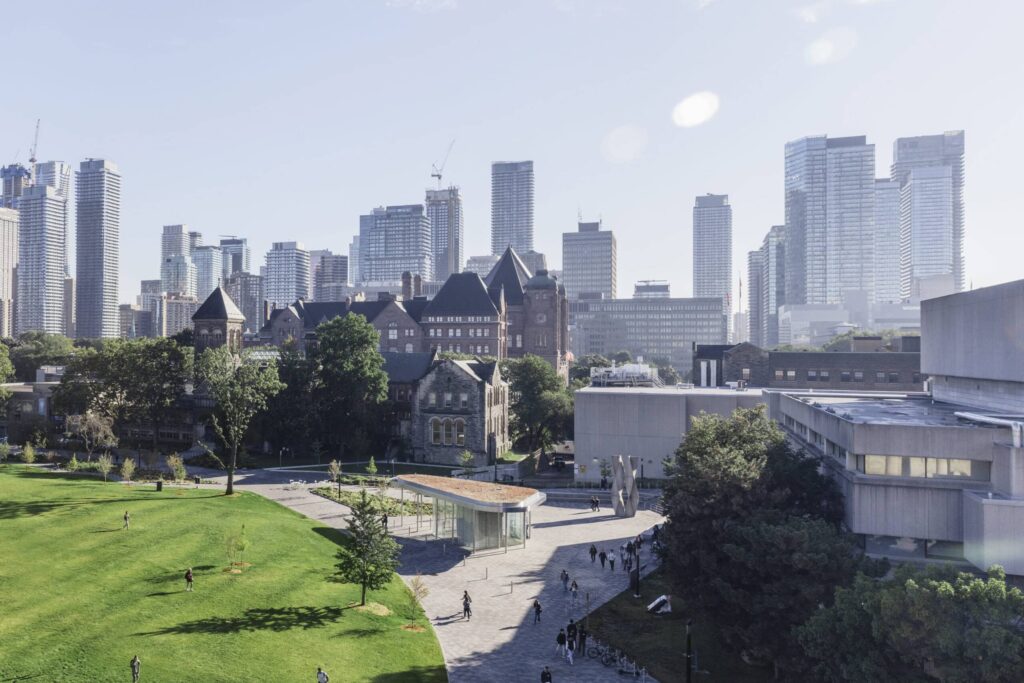

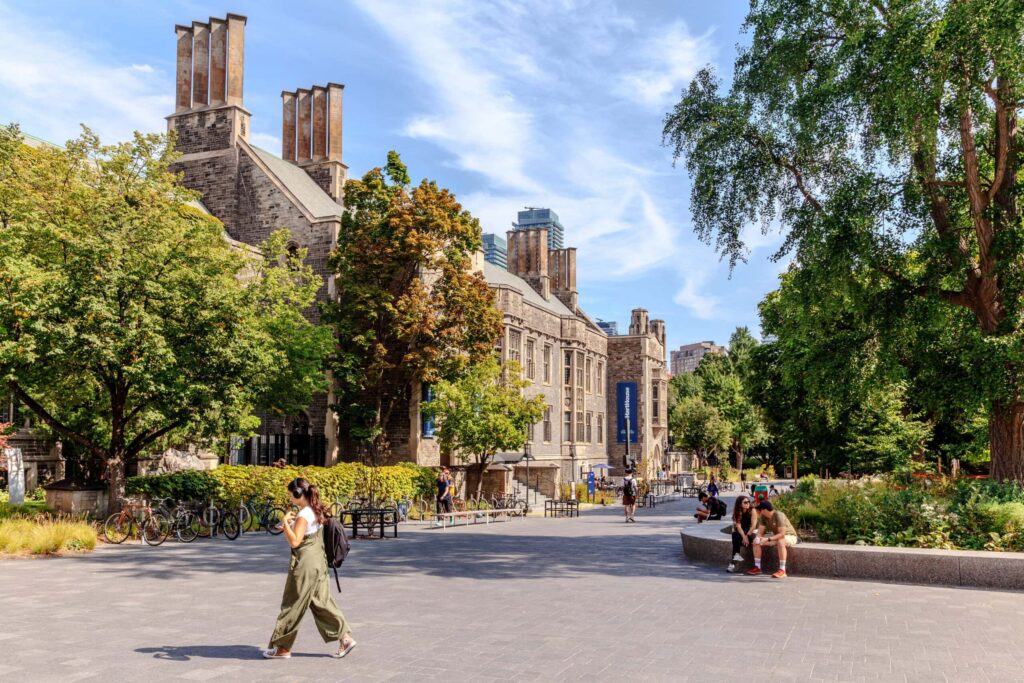
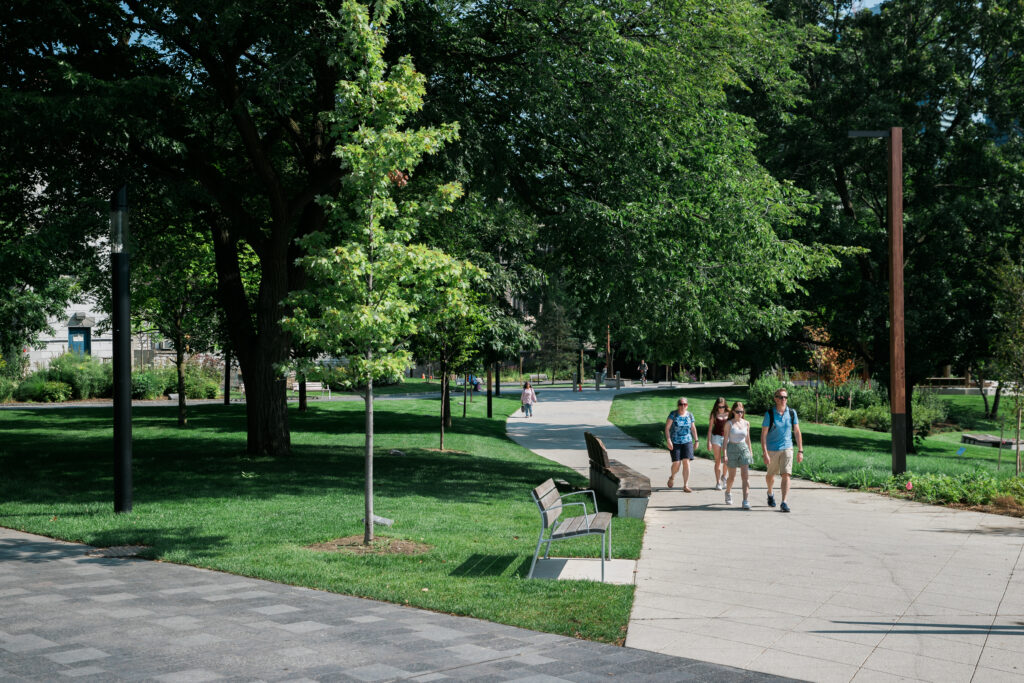
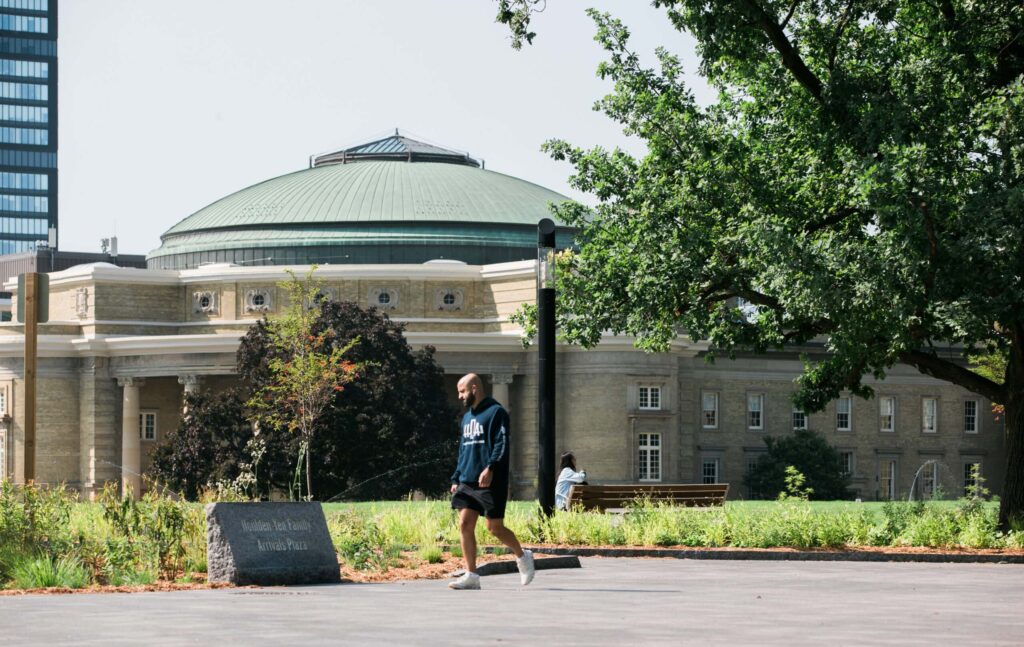
Today, areas such as Tower Road have been revitalized with granite paving stones and flanked by new trees and gardens set against the backdrop of historic architecture. Scace Walk is a beautiful new pedestrian walkway along Tower Road funded by the Henry White Kinnear Foundation. It will serve as an inviting space to gather and watch sporting events. North of this, the Bapsy and Darius Irani Garden at Hoskin Avenue opens to views of the athletic fields, University College and Soldiers’ Tower. To the south, in front of Soldiers’ Tower, the new R.G. Macdonald Plaza is a dignified setting for the university’s Remembrance Day ceremonies and for quiet reflection and commemoration year-round.

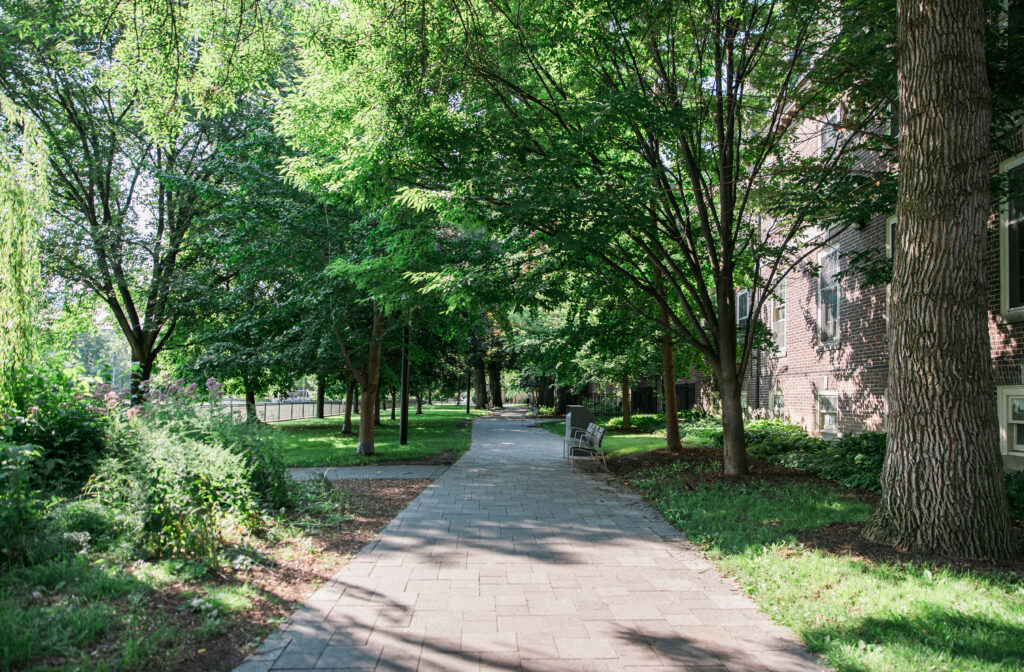
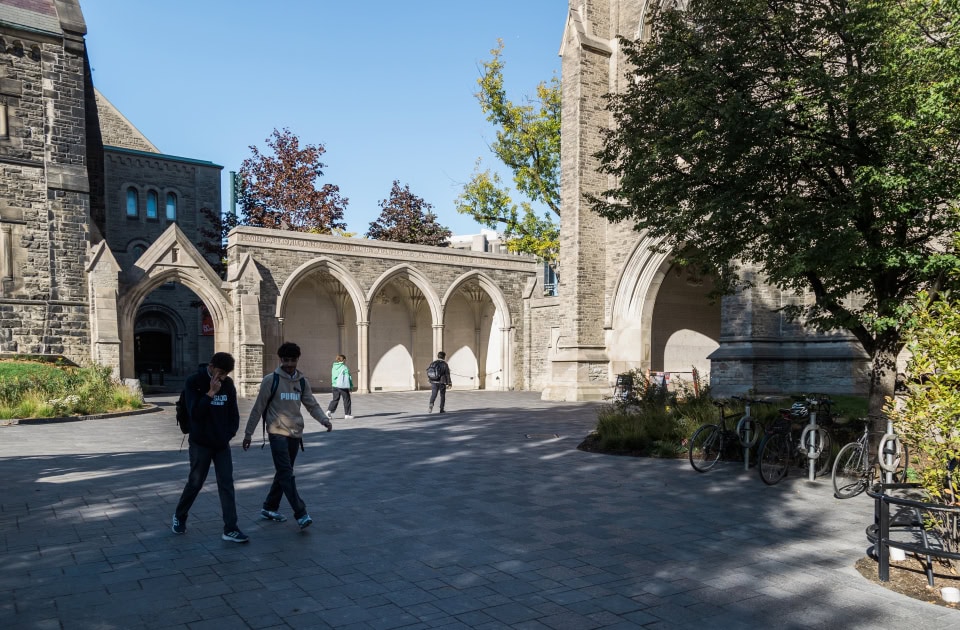
Adjacent to the J. Robert S. Prichard Alumni House, another new plaza has been built for people to congregate and connect with their campus and each other. North of this is a revitalized Sir Daniel Wilson quadrangle beside University College, with many new gardens. In total, 45 new gardens have been created, 253 new trees planted, and 110 new benches have transformed one of the most significant green spaces in Toronto’s urban core. 3,478 inscribed granite pavers across front campus pay tribute to community members who helped support Landmark and celebrate their connections to the University.
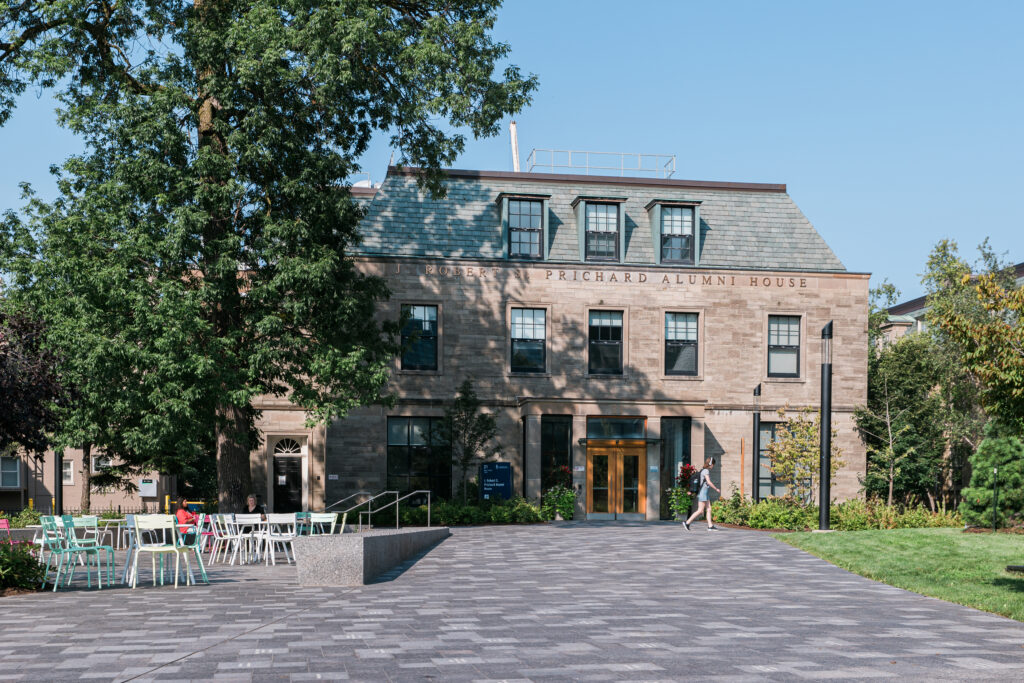
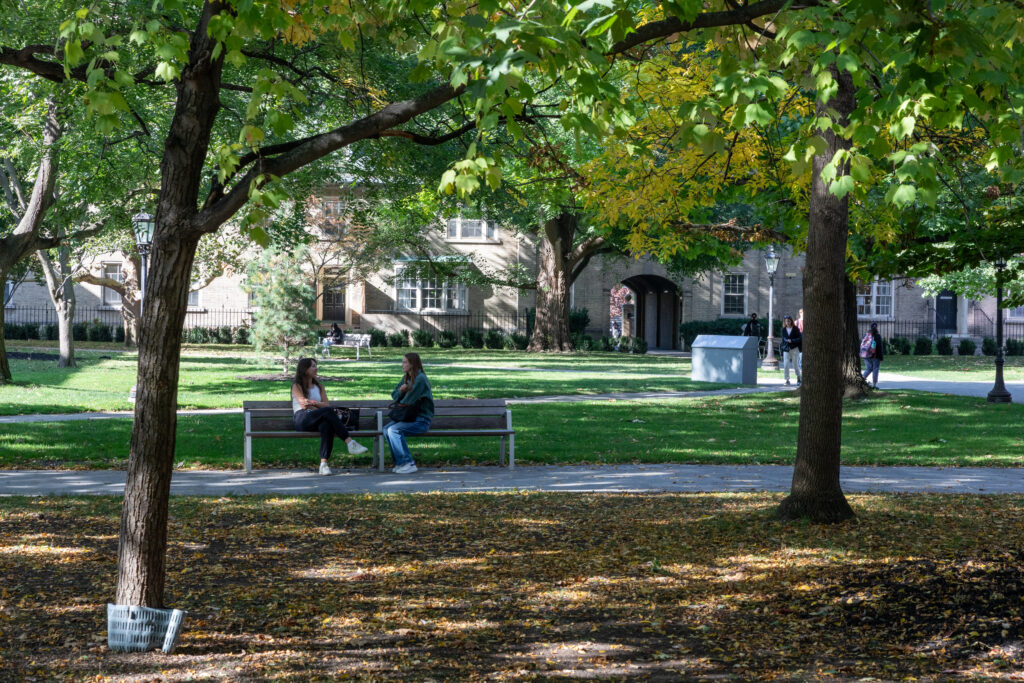
“Donors from more than 35 countries contributed to Landmark,” says David Palmer, Vice-President, Advancement. “It truly reflects the enduring spirit of our global community. Much of the project was created during a time of lockdowns and isolation, but it now stands as a place of connection, interaction and beauty. Time will show that the true measure of its success will be in the generations of students it will inspire.”
In September, the university invited donors, faculty, staff and friends of U of T — which included people from 35 countries — to an event at Convocation Hall to celebrate the official opening of Landmark. Guests toured the revitalized campus and got a chance to see their named installation. They also had an opportunity to talk to in-house experts at Alumni Plaza about how the transformation took place, and the creation and impact of the geothermal field.

–




